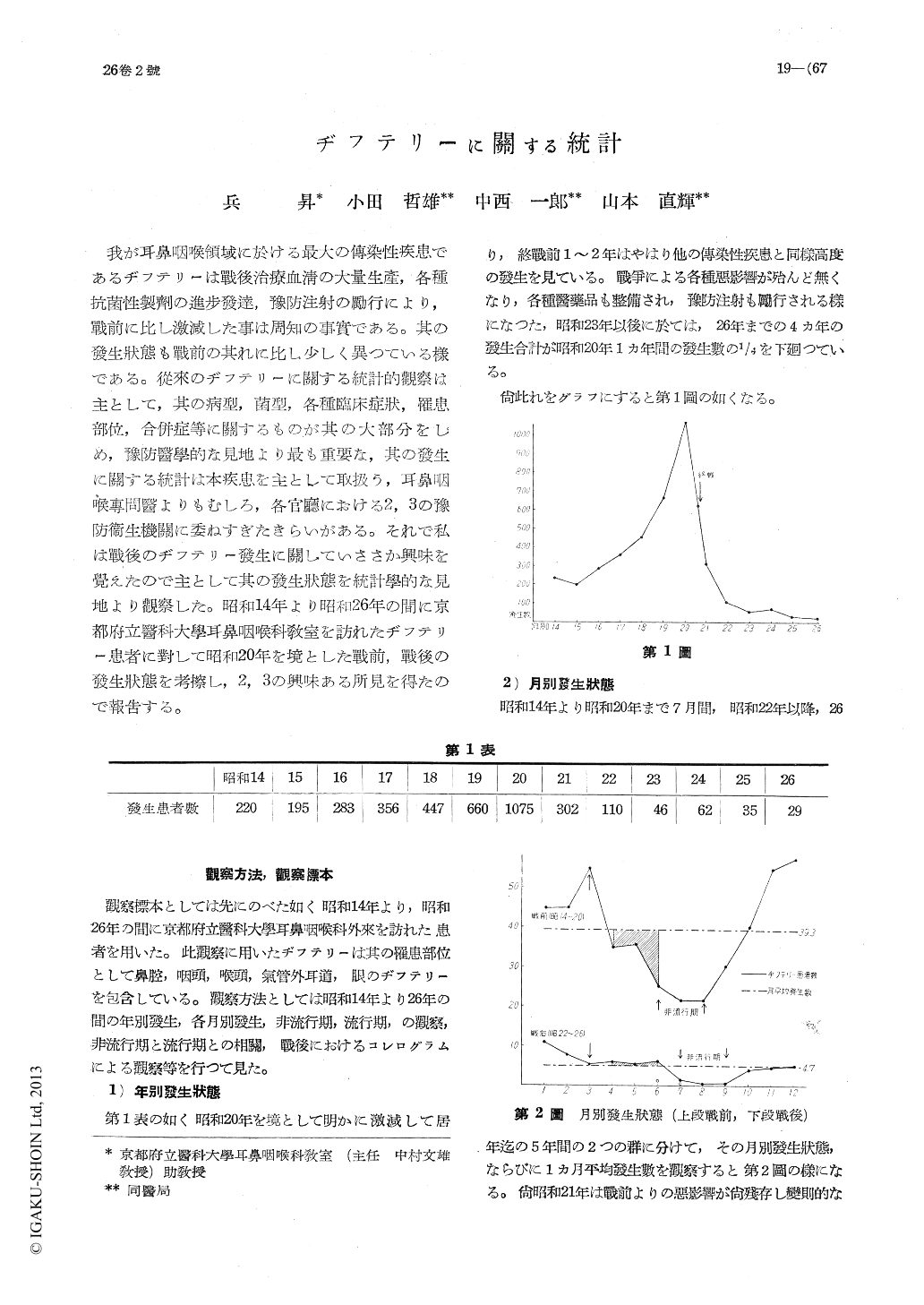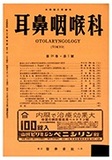- 有料閲覧
- 文献概要
- 1ページ目
我が耳鼻咽喉領域に於ける最大の傳染性疾患であるヂフテリーは戰後治療血清の大量生産,各種抗菌性製劑の進歩發達,豫防注射の勵行により,戰前に比し激減した事は周知の事實である。其の發生状態も戰前の其れに比し少しく異つている樣である。從來のヂフテリーに關する統計的觀察は主として,其の病型,菌型,各種臨床症状,罹患部位,合併症等に關するものが其の大部分をしめ,豫防醫學的な見地より最も重要な,其の發生に關する統計は本疾患を主として取扱う,耳鼻咽喉專問醫よりもむしろ,各官廳における2,3の豫防衞生機關に委ねすぎたきらいがある。それで私は戰後のヂフテリー發生に關していささか興味を覺えたので主として其の發生状態を統計學的な見地より觀察した。昭和14年より昭和26年の間に京都府立醫科大學耳鼻咽喉科教室を訪れたヂフテリー患者に對して昭和20年を境とした戰前,戰後の發生状態を考擦し,2,3の興味ある所見を得たので報告する。
HYO and associates made a statistical survey on incidence of diphtheria with referrence to periods pre- and post-war. Their conclusions are as follows: That the average number of diphtheria ine-ction per year has been highly decreased in years after the war.
That, the constancy with which epidemic of diphtheria occurred in cycles before the war, it was able to predict the next succeeding active epidemicity in the period which was considered as quiescent, but, after the war such relation is disrupted.
That, from graphic studies made, diphtheria is still a seasonal disease.

Copyright © 1954, Igaku-Shoin Ltd. All rights reserved.


